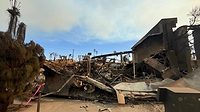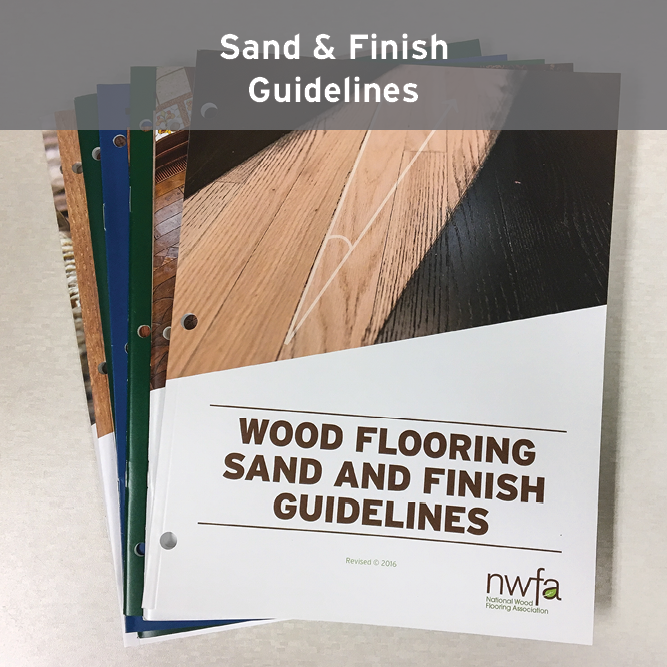Kathy Case Celebrates Her Family's 100-Year Flooring Legacy

Architectural Tiling & Terrazzo Company, Inc. in New Haven, Connecticut circa 1950.
Photo: Kathy Case.
My grandfather started in flooring in 1923, exactly 100 years ago this year. He was born as Olinto Vicenti, but he came into the U.S. in 1916 as Olin Vincent. He came to this country when Italians were really treated poorly and changed his name to try and Americanize it. He and my grandmother went through speech therapy to lose their accent.
He was an incredible singer. He actually went to seminary school in Rome and got all the way to the point of taking his vows and said he couldn't do it. But he knew that singing wouldn't provide for his family the way he wanted. So, in 1923 he started Architectural Tiling & Terrazzo Company, Inc., in New Haven, Connecticut.

Kathy Cases’ grandfather, Olin Vincent (center), started Architectural Tiling & Terrazzo Company, Inc. in New Haven, Connecticut in 1923. Photo: Kathy Case.
Keep in mind that everything was mud up until 1956 when Laticrete invented thinset. Back in the day when it was mud and you didn't have elevators to bring the mud up the stairs, he had over a hundred people on his payroll.
My grandfather passed in 1972, but he was active in [the business] up until the last two years. Dad took over the business in the late ‘60s.
My Dad was installing tile by the age of eight or working in the showroom, working in the warehouse, doing different things. He was not allowed to go to college. It was my grandfather's world. The men went to work, and the women went to college.
I went to Bentley in the Boston area. I was only the third class that allowed women in the school. It was an all-male school. That was in ’79.
We were a union shop. My grandfather helped start the union or form the union in Connecticut. Originally, the thought was that by having a union, businesses could pull resources together to have better benefits for their employees.
I was just short of my 24th birthday, but I had been working with my dad since 1979. I was going to school for business, so I started doing his books. During the summertime, I put in a full work week, and his books—even with all the union reports, and even with the fact that everything was done by hand because we were not computerized in 1979— everything was done longhand to the point that I almost had everybody's social security numbers memorized.
It was during that time that I learned how to type on a 1932 Royal typewriter. I learned how to use a calculator, whether it was an electronic calculator or the old school one that had a crank handle with the digits 0 through 9. I knew how to run my fingers up and down that without looking, but I also learned how to read blueprints.
My dad had a pamphlet from Dodge McGraw-Hill laying around. It was a four-page pamphlet on how to read blueprints. I took out his old drawings, and I tried to duplicate his work. He was excited that I was doing this, so he worked with me on visualizing the floor plan, understanding outside corners, inside corners, soffits, all the details and not just looking at the flat drawing.
Back in those days, you didn't have 12”x12” and 24”x24” tiles. You had mosaics, and you had four and a quarters for most commercial work. My dad and I felt that you had to know all those trim pieces. I didn't place my orders with a local sales rep. I placed my orders with the factory operations managers. You not only needed to know all those trim pieces, but you also needed to know how many feet were in a box and how many boxes were on a palette. I had competitors that still relied on the manufacturer’s salesperson to figure all those trim pieces. I didn't want to rely on someone else to figure out everything that I needed.
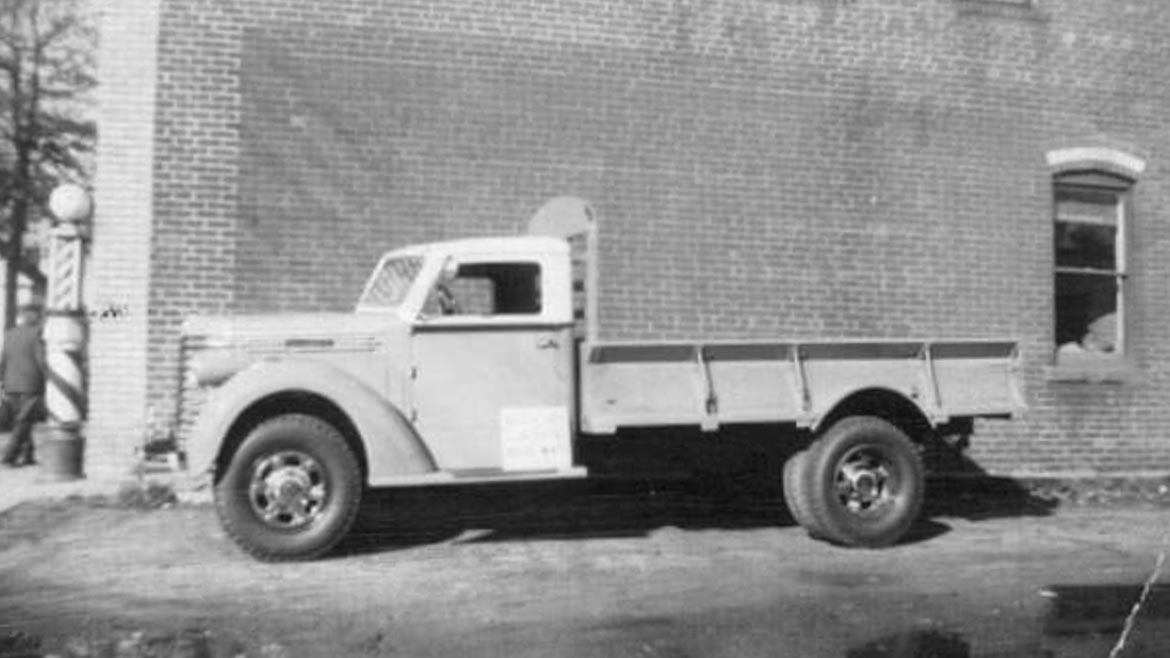
Architectural Tiling & Terrazzo Company, Inc. company truck. Photo: Kathy Case.
In 1982, my father's partner lost his first leg; he was diabetic. His kidneys had shut down. He was on dialysis. We referred to him as a partner, he didn't have ownership in the business, but they shared everything, including profit.
At that point, I was going into my senior year. I had a double major. I only had four classes left to take, and Bentley allowed you to take 10% of your classes and transfer them and still graduate from there. I went back to Connecticut to take those four classes from Quinnipiac University and work alongside my dad to give him support. So, I took the classes at night while working with him. I was preparing for international finance.
I had all the necessary things in line. I had letters, a recommendation from professors and heads of departments. I worked for a bank in addition to working with my dad while I was at school, and the bank wanted me to stay on board. My dad never wanted us to feel pressured into working in the business, but ultimately his goal was to semi-retire at the age of 55.
When I graduated from school in 1983, he was 51. That spring when I came home for spring break, I told him that I wanted to enter the business, and I started working with him full time.
I began installing prior to graduating college because it was something that my dad promoted as well, especially being a woman in the business. You're always challenged for what you know, and there's no better way to prove what you know than to do it.
By 1983, I was also doing estimates. I was learning how to do project management in addition to the billing and everything that goes with bookkeeping. I was typing their quotes out on that 1932 Royal typewriter.
I started estimating my own projects typically anywhere from $10,000 to $50,000 projects and managing small projects, learning on the jobsite—how to get the material into the space; where to find the water; and the slab conditions.
I landed my first quarter of a $1 million project in early 1985, which was a Marriott Hotel in Trumbull, Connecticut. I started managing that project in May of ’85 and by September, I was managing all the projects.
My father ran the business until 1985. He passed away on a Sunday of Labor Day weekend. It was September 1, and Tuesday when I went into the office, my installers were there in the office and pointed to my dad's chair and just said, “That's your spot now.”
One major challenge in that first year after my dad passed away was the legislative office building was being bid. It had stone railings that cost $700 per lineal foot in 1985. I was fortunate enough—this is why I do what I do now—that many people stepped up to the plate for me at a time when men didn't want to share with each other because they would lose their advantage.
Two people stepped up and helped me with the legislative office building, and my goal was not to win the job. It was a public bid opening. I wanted to learn the process and make sure I was competitive, and you need to learn the bid process.
Prior to 1990, any work that included government money was done by unions. It was mandated. But things changed with the Davis-Bacon Act, and people could now bid work, even if they weren't union as long as they proved that they paid union scale.
If you take somebody who is non-union and now pay union scale, you want to see what kind of productivity you get from them. I was working 100-hour work weeks where my installers were working 35 to 40, and they were making more money than me.
I thought, “You know what? I'm not going to kill myself so that you have a job.” In February 1990, I closed the business and went to work for someone else. I went to work for a company that did all flooring types, but my focus was ceramic tile. They had somebody else that did the carpet and resilient flooring back in the day, when most of it was broadloom and not carpet tile. I worked for them for about a year.
I worked for several companies and got disheartened and got out of it for a couple of years.
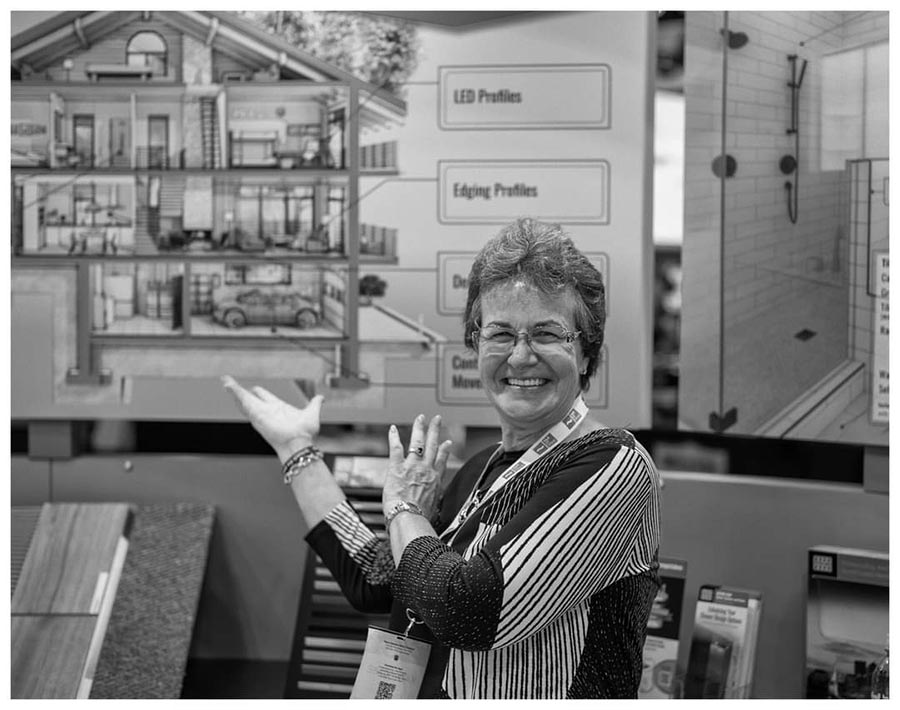
Kathy Case is currently the director of business Development for Quantify North America. Photo: Kathy Case.
In 1994, I went to work for BKM as an estimator. I worked with them for 2 years, at which point the industry was changing. They had seven estimators, and they were realigning their business. They were going down to two estimators. I was the last hired, and everybody was good. Having been a business owner, I wasn't taking it personally.
I returned to a sales position with a stone company, Connecticut Stone. Their main business started out where they did landscape stone and the veneer stones.
I, then, went to work for a company called Coastal Tile and Marble out of New York. I managed their Connecticut operation from 2003 until 2009. At that point, I changed my focus back to estimating.
I went to work for M. Frank Higgins out of Connecticut and helped build their ceramic tile division. I was doing the estimating for their carpet and resilient as well. But that's what they [built their business] on, and now they were building on their ceramic tile side. I continued to work there until 2014. After that, I took a job with Bonitz in Richmond, Virginia and worked there for nearly three years.
In November 2019, I started an estimating service—just myself and my current operations manager. We got some partners into the company to help with a little bit more funding. Our goal was to be estimating five million square feet per month by the end of 2020. In February, we nearly hit it. Then in March, COVID hit. In April, we didn't even hit a million. We were at around half a million square feet per month.
Three weeks after COVID, my husband was diagnosed with aggressive cancer, and he died six weeks later. It gave me an opportunity to turn the business over to my operations manager and take care of him until he passed.
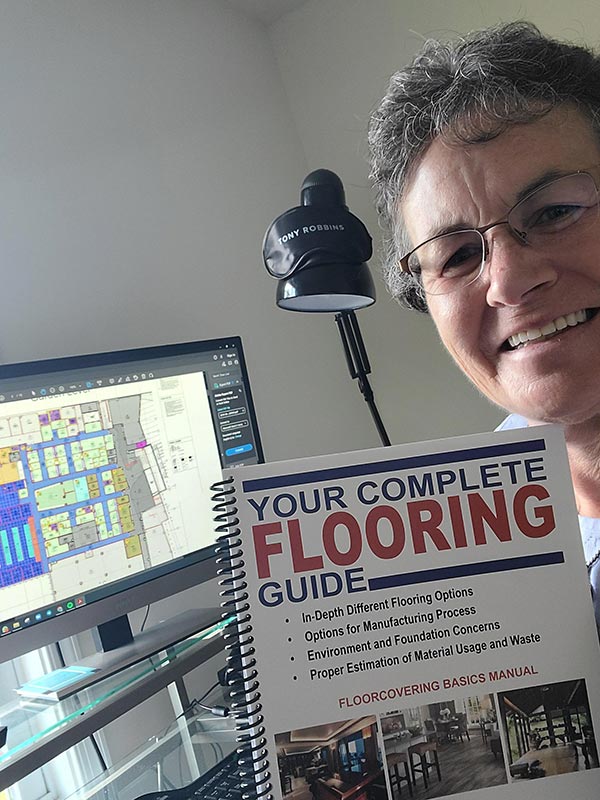
When I came back, I went to my partners and said, “Okay, now, what do we do to build a business?” I had ideas, but every time I presented an idea to my biggest investor, he always blew it down, so I didn't present it. I started doing it. It worked, and it kept working.
I have a daughter who runs four businesses for her boss. He started installing at 15 or 16 years old, and he built a labor house, a work room. He took the money he earned from that and invested it into both commercial and residential real estate. Just before COVID, he opened a showroom. Last year, he opened the commercial contracting arm of his business. My daughter manages all the purchases, all the payroll, everything. She's kind of following in Mom's footsteps.
When I was working for Coastal Tile, she did my submittals at age 13. It started out that I would give her a transmittal letter, and I would give her the single copies of everything because everything was done in paper back then, and she would just make the copies, collate them, staple them, and order samples for me. But then she asked, “How do I find these different papers?” I gave her the transmittal letter. She would go online and download all the papers that she needed and put them together.
When she was 18, I started teaching her how to do estimating.
She started in flooring when she was nine years old, but she’s been doing it full-time now since 2018. She's basically working as a CFO of this company, and she's learning accounting principles from their CPA. She's taken the RFMS Core System, customized it for their business and now has added in the accounting feature and customized that for their business as well.Looking for a reprint of this article?
From high-res PDFs to custom plaques, order your copy today!




